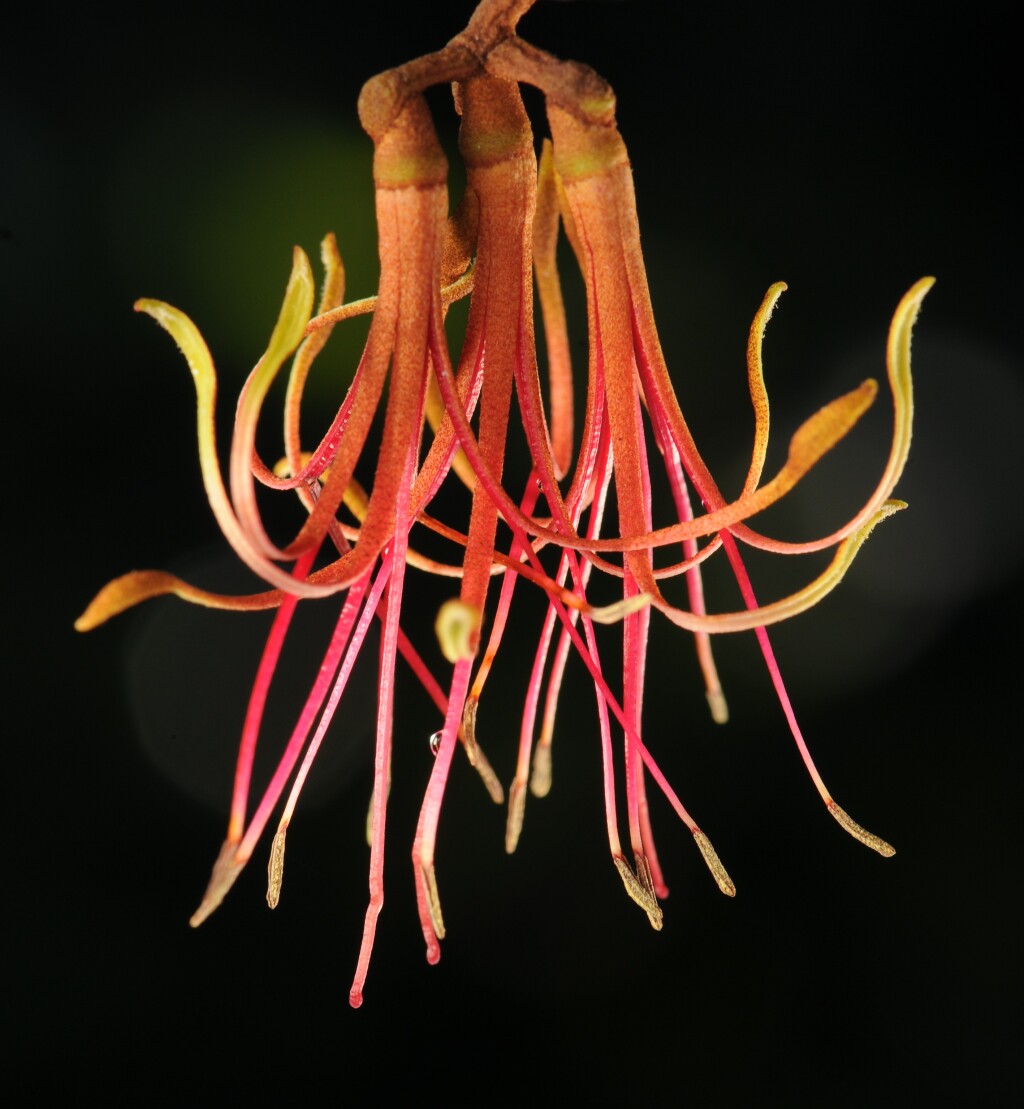Loranthaceae
Trees (not in Victoria) or shrubs, hemiparasitic mostly on the stems or branches of woody plants, rarely on the roots of plants (not in Victoria). Leaves mostly opposite, rarely alternate or whorled, simple, entire, curvinerved or penninerved; stipules absent. Inflorescences axillary or terminal, umbel-like or raceme-like, 1–4-flowered, often a 3-flowered (triad) or 2-flowered (dyad) dichasium; bracts usually 1 per flower. Flowers usually regular, bisexual, rarely unisexual; calyx-tube cupular, apex entire, lobed or toothed; petals 4–6, free or united, valvate; stamens as many as, and adnate to petals, anthers 2- or 4-celled, usually basifixed, immobile and introrse, sometimes dorsifixed and versatile, opening longitudinally; ovary inferior, obscurely 1–4-celled, style simple, stigma simple. Fruit usually succulent, berry-like (in Victoria), rarely drupaceous or dry and winged; seed single, usually surrounded by a viscous layer.
About 65 genera with c. 950 species, virtually cosmopolitan, chiefly in tropical and south temperate regions; 12 genera and 70 species in Australia.
Jeanes, J.A. (1999). Loranthaceae. In: Walsh, N.G.; Entwisle, T.J., Flora of Victoria Vol. 4, Cornaceae to Asteraceae, pp. 38–45. Inkata Press, Melbourne.
 Spinning
Spinning


